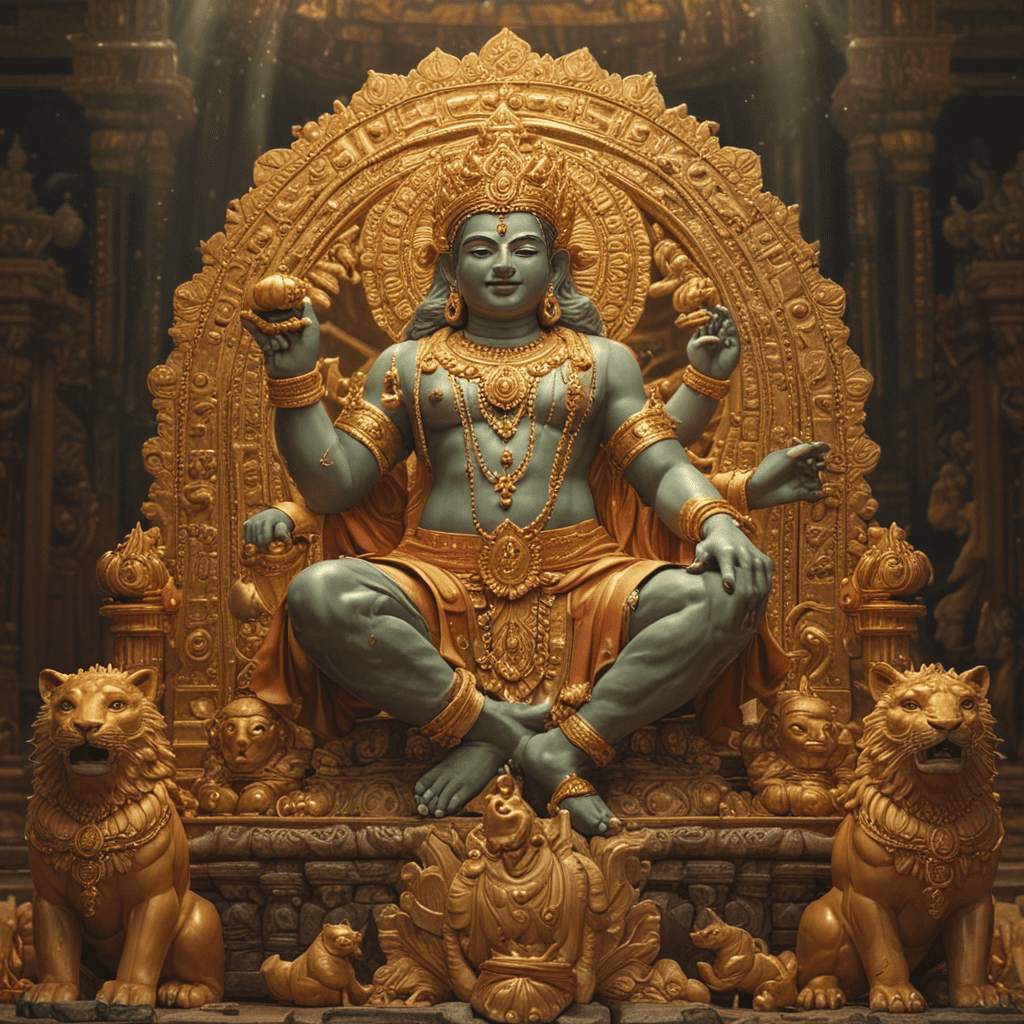The Most Iconic Flood Myths and Their Cultural Significance
Introduction to Flood Myths
Flood myths are narratives found in various cultures around the world that describe a great deluge sent by deities or nature to cleanse the earth of humanity’s sins or to reset life. These stories, often featuring a chosen survivor or survivors, showcase the resilience of humanity in the face of overwhelming disaster. They play a crucial role in cultural identity and moral teachings, serving as cautionary tales or reflections on human nature.
Flood myths are not only fascinating from a literary perspective but also offer insights into the values, fears, and environmental concerns of the societies that created them. They often highlight themes of destruction, rebirth, and the relationship between humanity and the divine.
The Great Flood in Mesopotamian Mythology
One of the oldest flood myths is found in the Epic of Gilgamesh, a cornerstone of Mesopotamian literature. In this epic, the character Utnapishtim recounts how the gods decided to flood the earth to eradicate humanity, which they deemed too noisy and troublesome. However, Utnapishtim was forewarned by the god Ea and built a massive boat, saving himself, his family, and various animals.
The cultural significance of this myth lies in its reflection of the Mesopotamian worldview, where gods were capricious and their favor was crucial for survival. The story also emphasizes themes of immortality, the relationship between humanity and the divine, and the importance of heeding warnings and preparing for disasters.
The Biblical Flood: Noah’s Ark
The Genesis account of Noah’s Ark is perhaps the most well-known flood myth in the Western world. According to this narrative, God saw the wickedness of humanity and decided to cleanse the earth with a flood. Noah, a righteous man, was instructed to build an ark to save his family and pairs of every animal species.
This flood story has profound implications in Judeo-Christian beliefs, symbolizing divine justice and mercy. It teaches lessons about obedience, faith, and the possibility of redemption. The covenant that follows the flood, symbolized by the rainbow, carries a message of hope and renewal, underscoring the importance of maintaining a righteous path.
Hindu Mythology: Manu and the Great Deluge
In Hindu mythology, the story of Manu and the great deluge is a compelling narrative. Manu, the progenitor of mankind, is warned by a fish (an incarnation of the god Vishnu) about an impending flood that would destroy all life. He builds a large boat and saves himself, the seven sages, and various seeds of life.
The symbolism in this myth is rich, with Manu representing the survival of humanity and the continuity of life. It reflects Hindu beliefs about cyclical time and the idea of destruction followed by rebirth, emphasizing the relationship between humans and the divine in safeguarding the world.
The Greek Flood Myth: Deucalion and Pyrrha
The Greek flood myth features Deucalion and his wife Pyrrha, who were forewarned by Prometheus about Zeus’s plan to flood the earth. They survived in a chest, and after the waters receded, they repopulated the earth by throwing stones over their shoulders, which transformed into humans.
This myth is deeply connected to themes of rebirth and renewal. It can be interpreted as a commentary on human resilience and the cyclical nature of life, emphasizing the potential for new beginnings even after devastating events.
Native American Flood Myths
Native American cultures have a rich tapestry of flood myths, each unique to their traditions. For example, in some tribes, the flood is a form of punishment for human misdeeds, while in others, it serves as a cleansing mechanism. Common elements include a chosen survivor, often a cultural hero, who is tasked with the responsibility of rebuilding the world.
- Lesson of Balance: Many Native American flood myths emphasize the need for balance between humanity and nature.
- Connection to Nature: These stories often highlight the interconnectedness of all living beings and the importance of respecting the environment.
The Chinese Legend of Gun-Yu
The Chinese myth of Gun and Yu focuses on the struggle against flooding and environmental chaos. Gun attempted to control the floods with dikes and was punished by the emperor, while his son Yu took a different approach by working with the water rather than against it, ultimately succeeding in taming the floods.
This myth carries significant cultural implications in China, symbolizing the importance of harmony with nature and the value of perseverance and adaptability in overcoming challenges. It also highlights agricultural themes, as managing water resources is crucial for farming societies.
Mesoamerican Flood Myths: Quetzalcoatl’s Tale
In Mesoamerican mythology, particularly among the Aztecs, the flood myth featuring Quetzalcoatl tells of a great flood that was sent to purge humanity for its sins. Quetzalcoatl, a feathered serpent god, saved a few humans who were worthy, allowing them to repopulate the earth.
This narrative has influenced contemporary cultural practices, reflecting the importance of moral behavior and the consequences of human actions. The themes of sacrifice and divine intervention are prevalent, showcasing the relationship between gods and humans in Mesoamerican cultures.
Comparative Analysis of Flood Myths Across Cultures
Flood myths share several common themes, despite the differences in their narratives. Some of the prevalent themes include:
- Divine Retribution: Many myths depict floods as a punishment for human wrongdoing.
- Survival and Resilience: Central to these stories is the idea of survival against overwhelming odds.
- Rebirth and Renewal: Most myths conclude with a sense of hope and the possibility of starting anew.
These themes provide insights into the human experience, particularly our relationship with nature and the moral lessons we draw from our experiences. They also highlight environmental concerns, reminding us of our vulnerability in the face of natural disasters.
Conclusion: The Enduring Legacy of Flood Myths
The cultural significance of flood myths extends beyond their narratives; they reflect deep-seated beliefs, values, and lessons that have shaped societies throughout history. These myths continue to resonate in modern times, influencing literature, art, and environmental awareness.
As we face contemporary challenges such as climate change and natural disasters, the lessons embedded in these ancient tales remind us of our responsibility to protect our planet and the importance of heeding warnings from nature. The enduring legacy of flood myths serves as a testament to the resilience of humanity and our quest for understanding in an ever-changing world.
![]()


